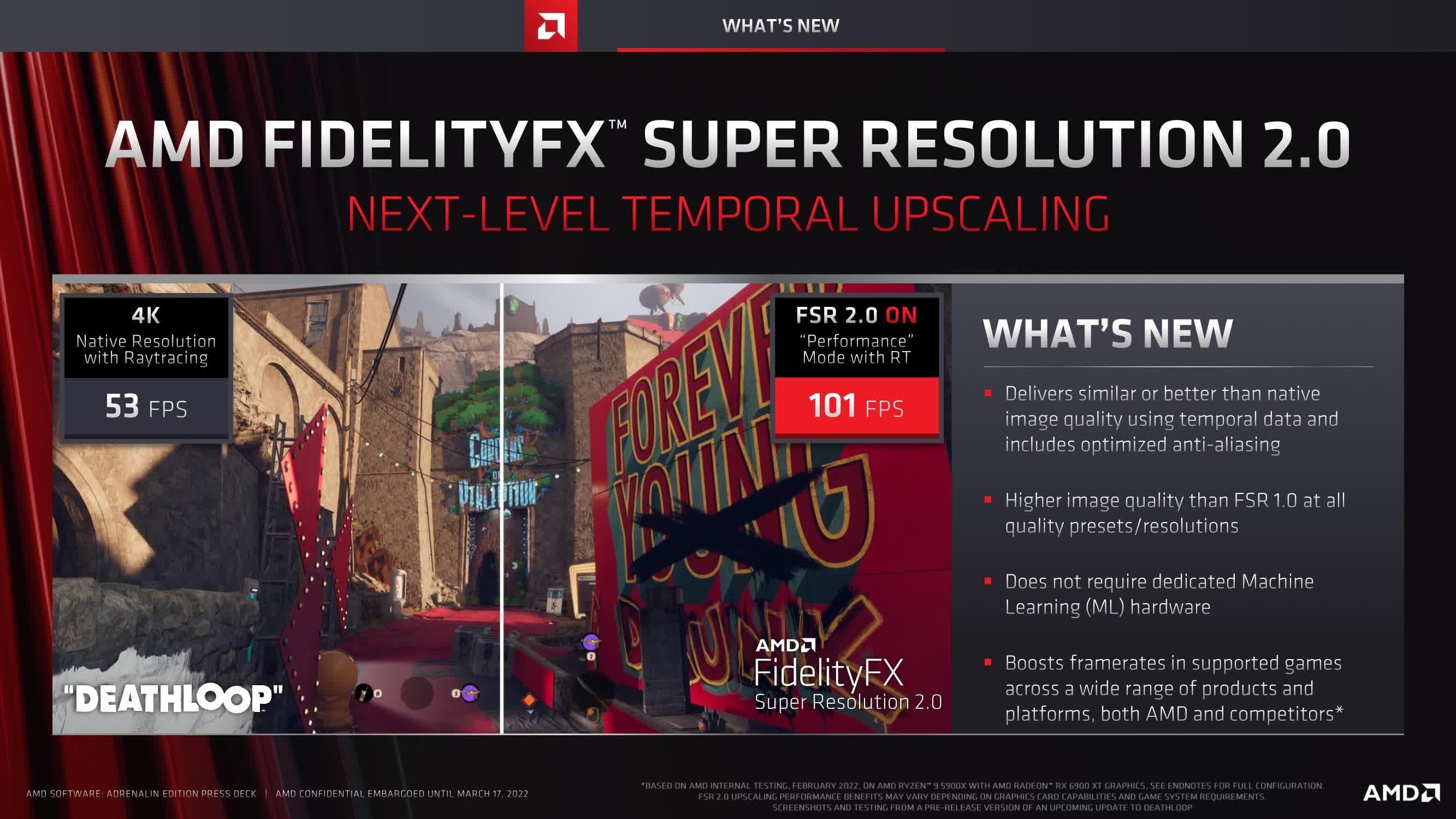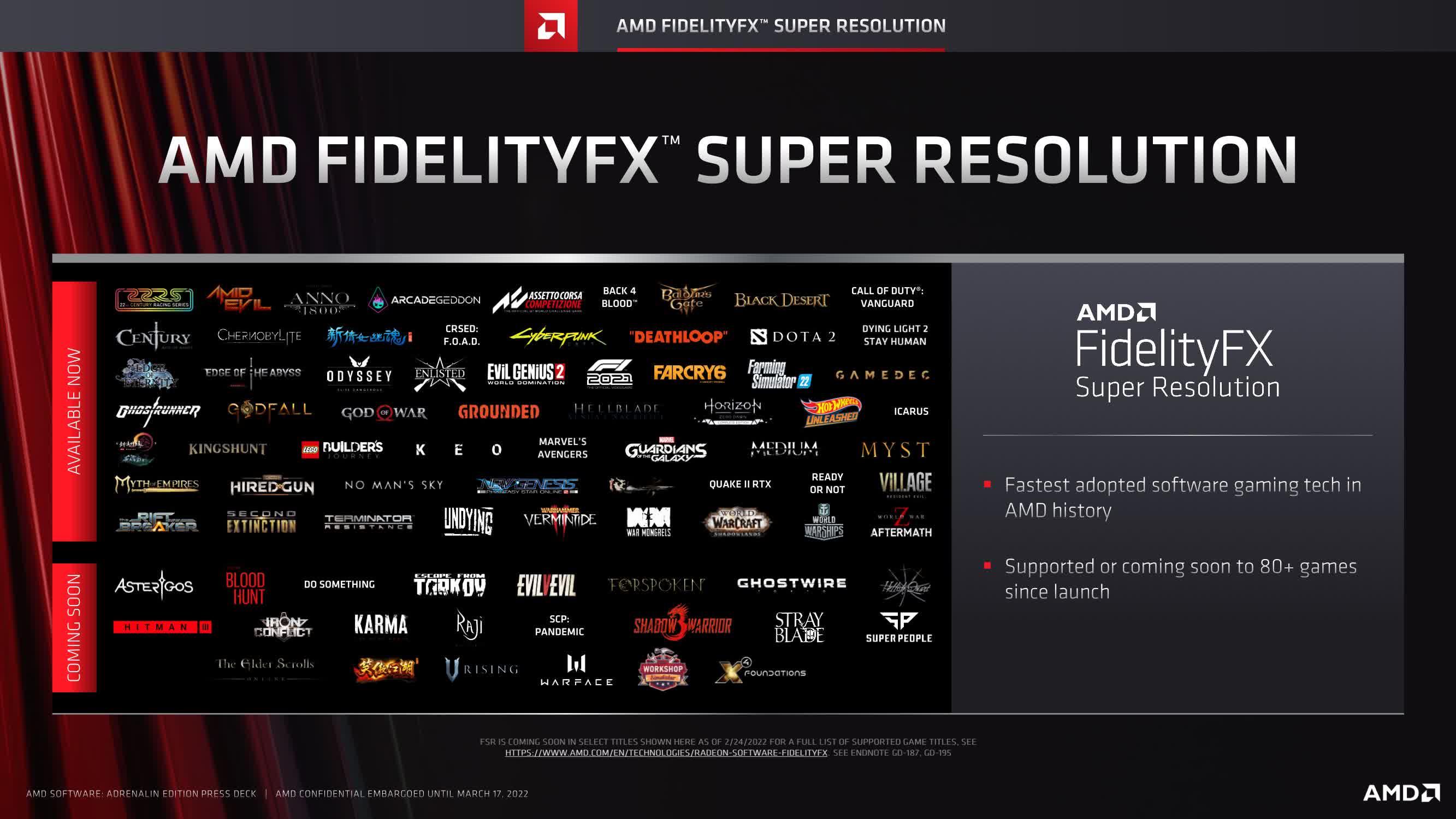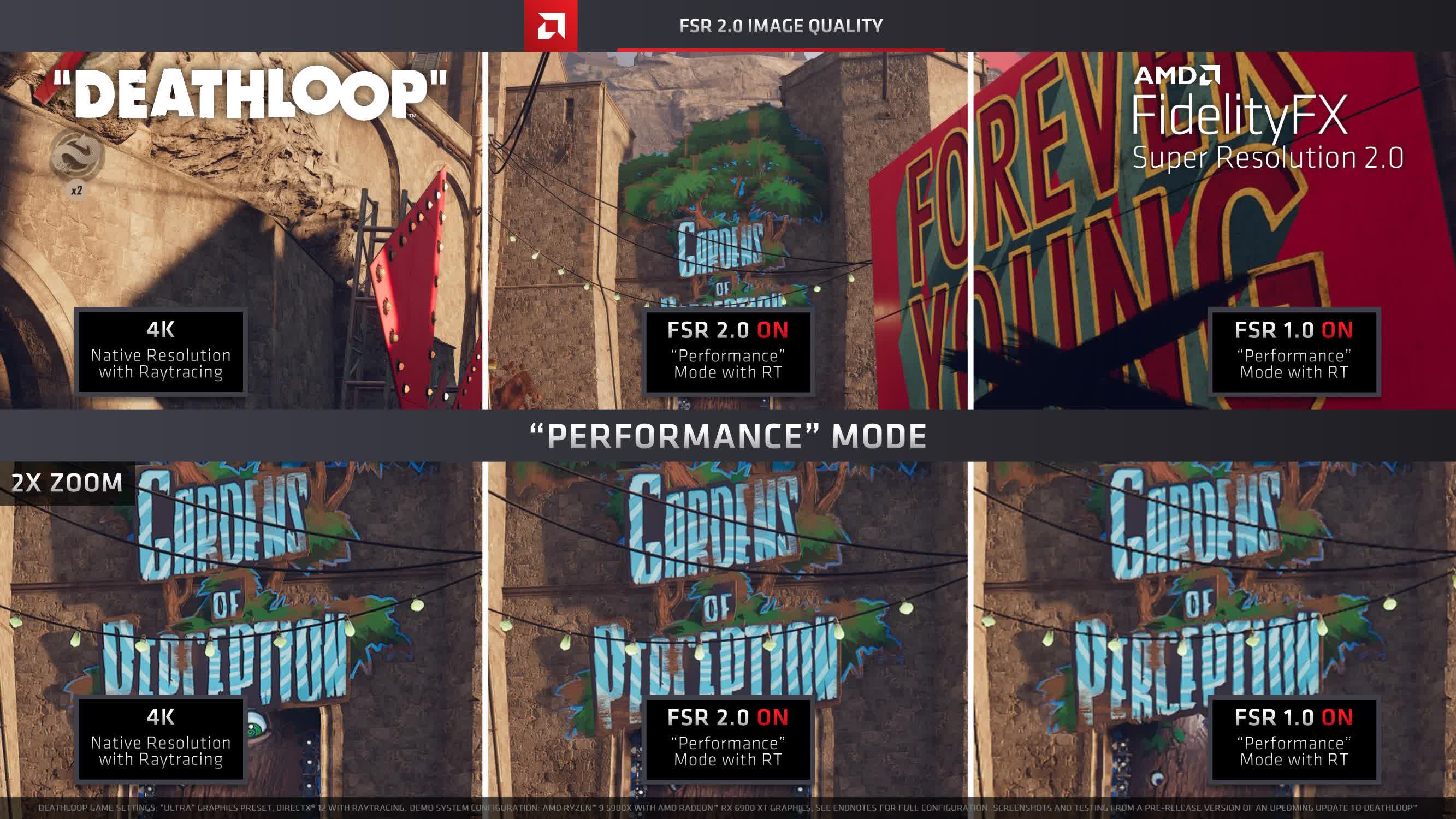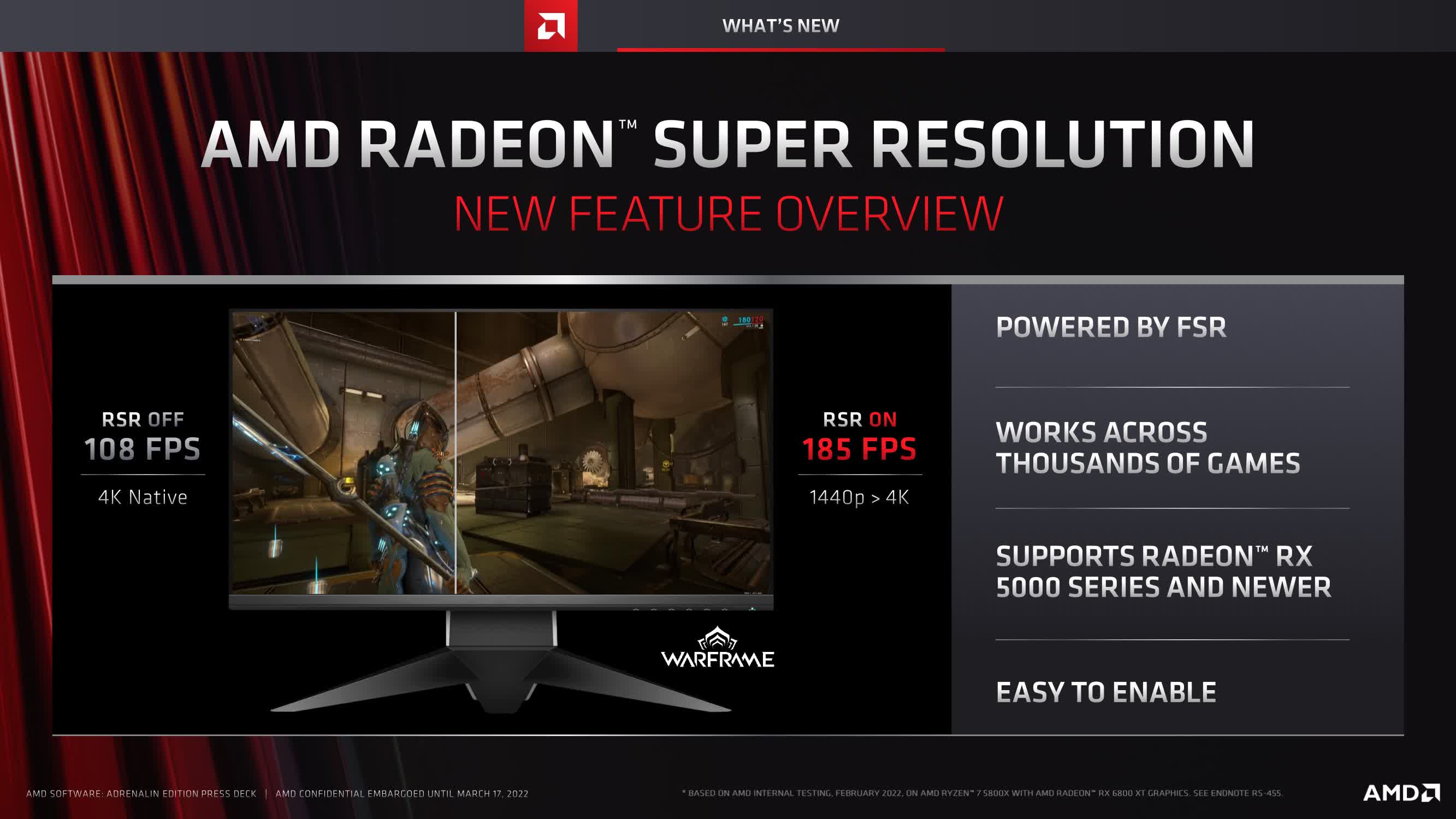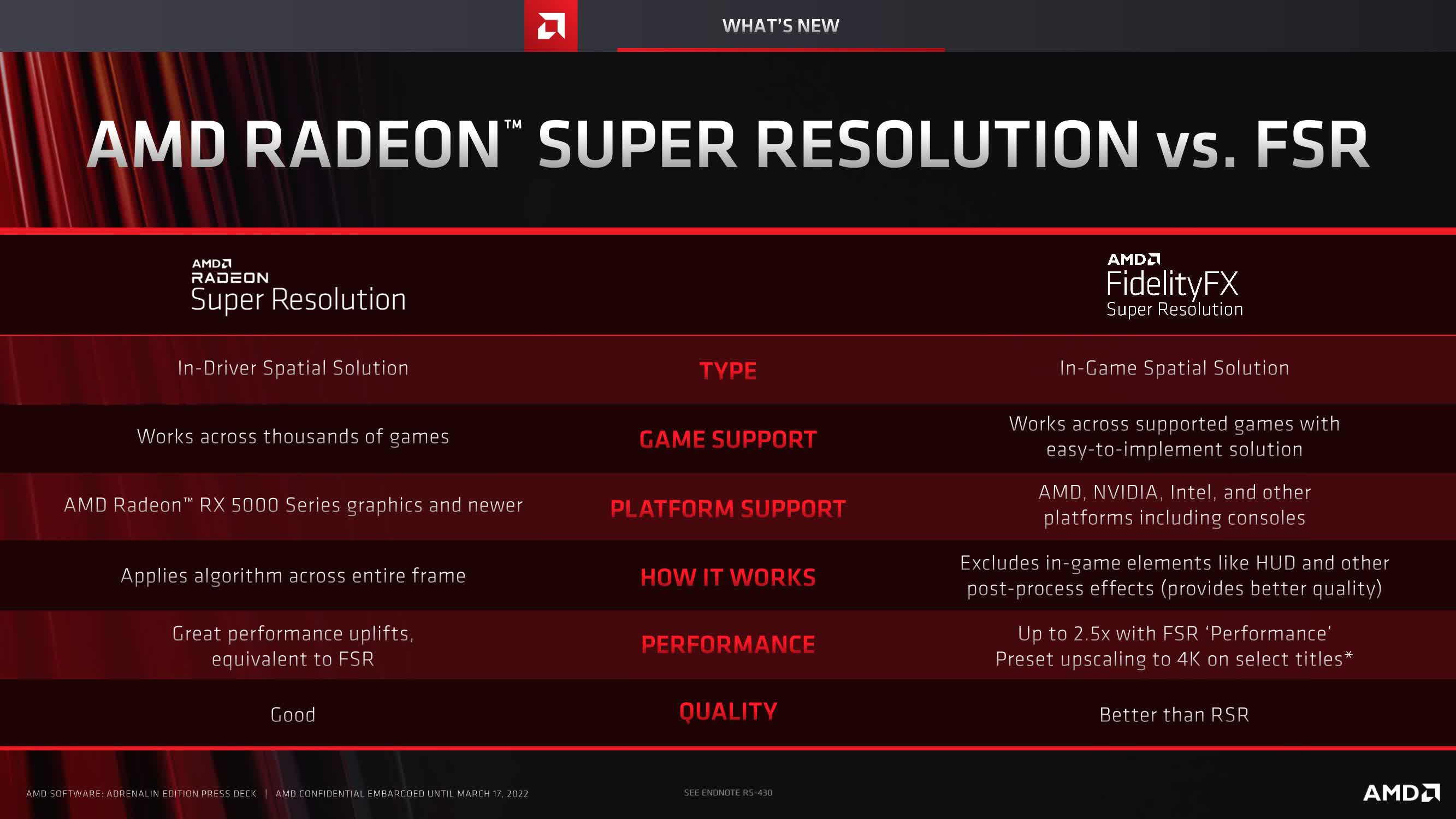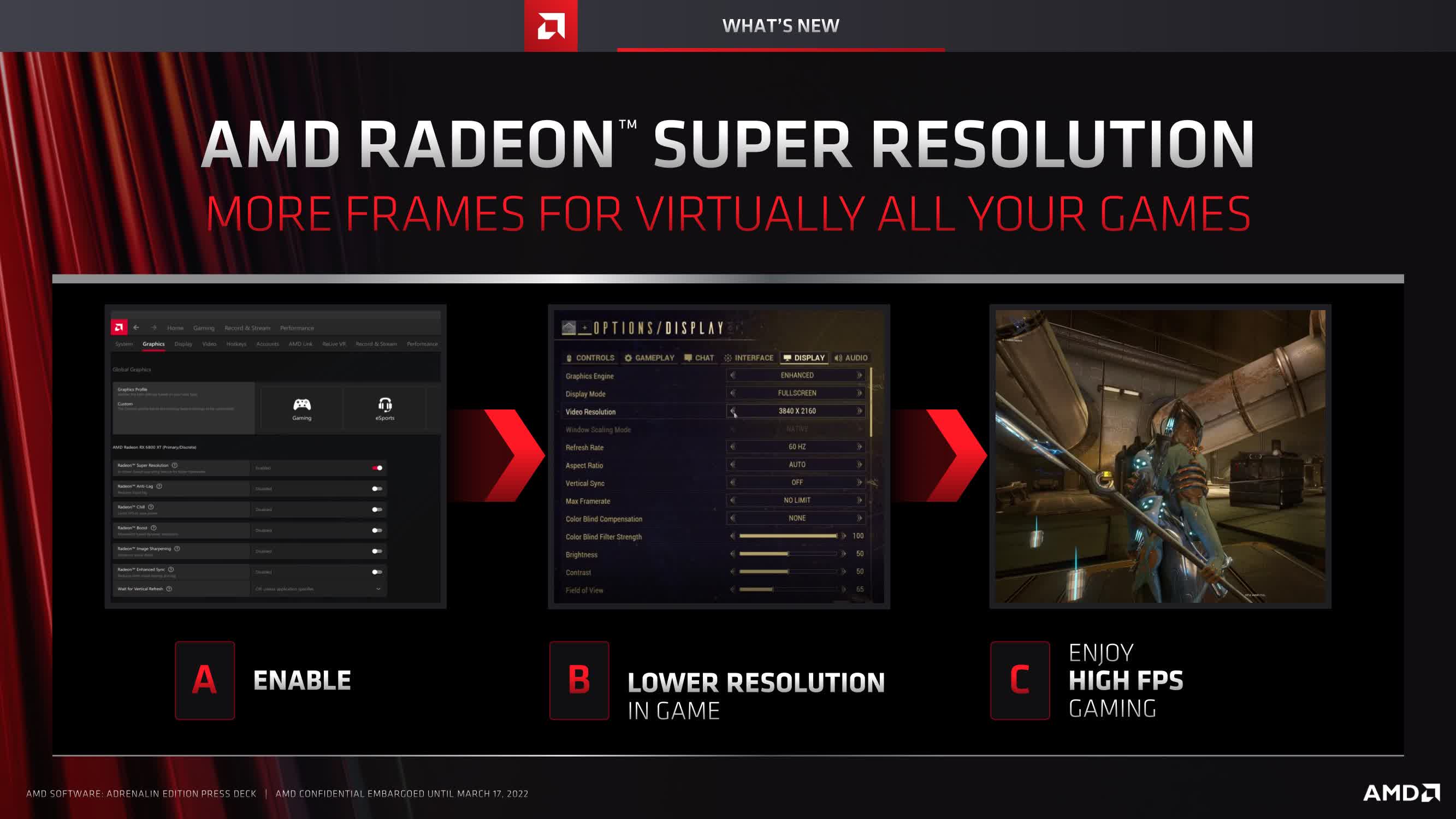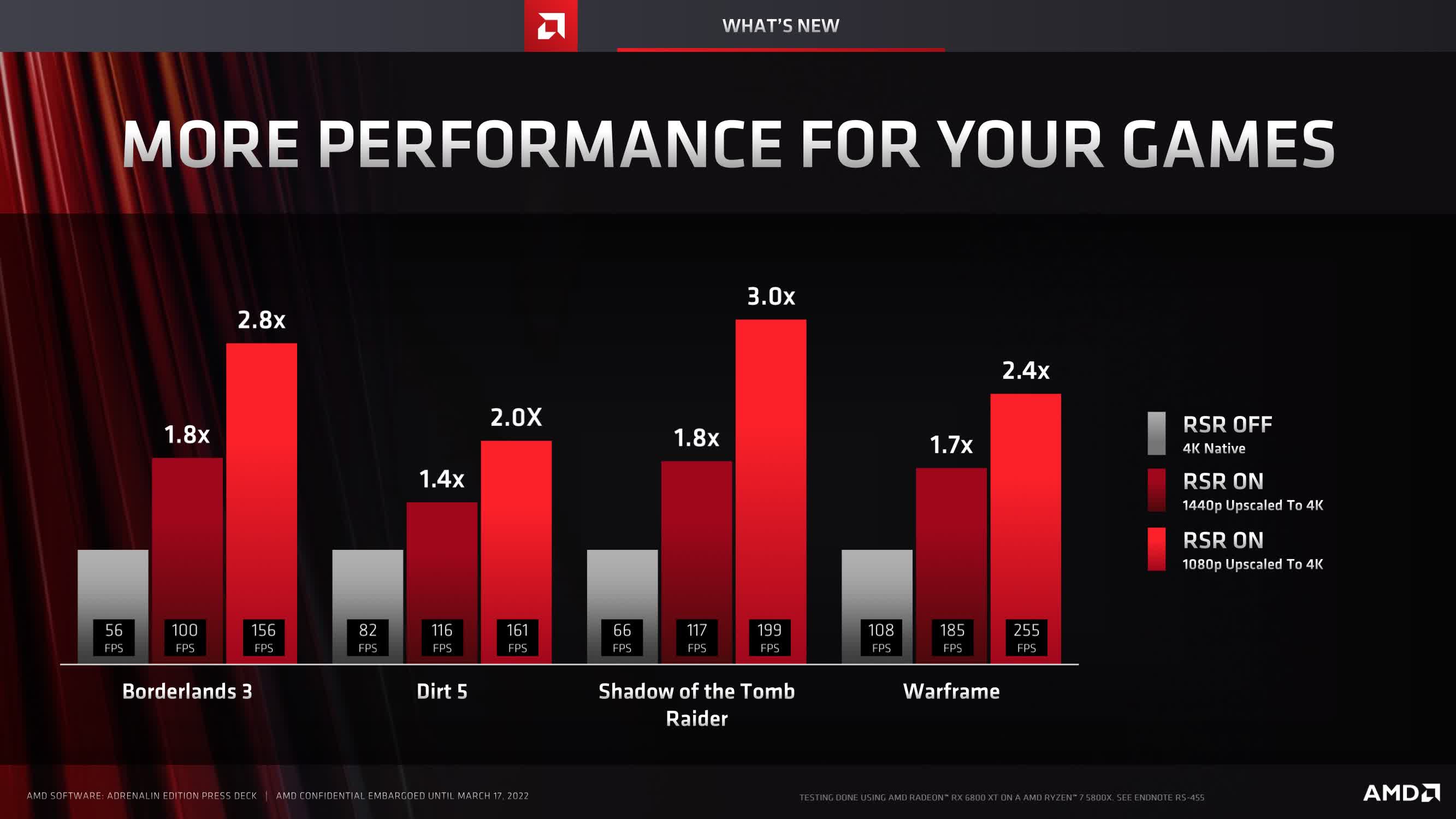Something to look forward to: AMD has packed together a bunch of GPU software related announcements today. The big one is the launch of a new revision of FidelityFX Super Resolution. FSR 2.0 will be a temporal upscaling solution, which differs greatly from FSR 1.0, a spatial solution. FSR 2.0 going temporal brings it more in line with technologies like Nvidia's DLSS and Intel's upcoming XeSS, which both use temporal data to enhance the upscaling process and simply give more data points to the algorithm.
By switching from spatial to temporal, FSR 2.0 should deliver much higher visual quality than FSR 1.0. FSR 1.0 was useful at resolutions like 4K, especially when using the "Ultra Quality" mode where it could get close to DLSS (without matching it) at times.
But put simply, the image quality DLSS was able to provide at lower resolutions and lower quality levels was much better -- think at 1080p, or when using the Performance mode. There are also elements that DLSS handled better, such as foliage, and FSR could struggle when the game's built in TAA implementation was poor, like we saw in Marvel's Avengers.
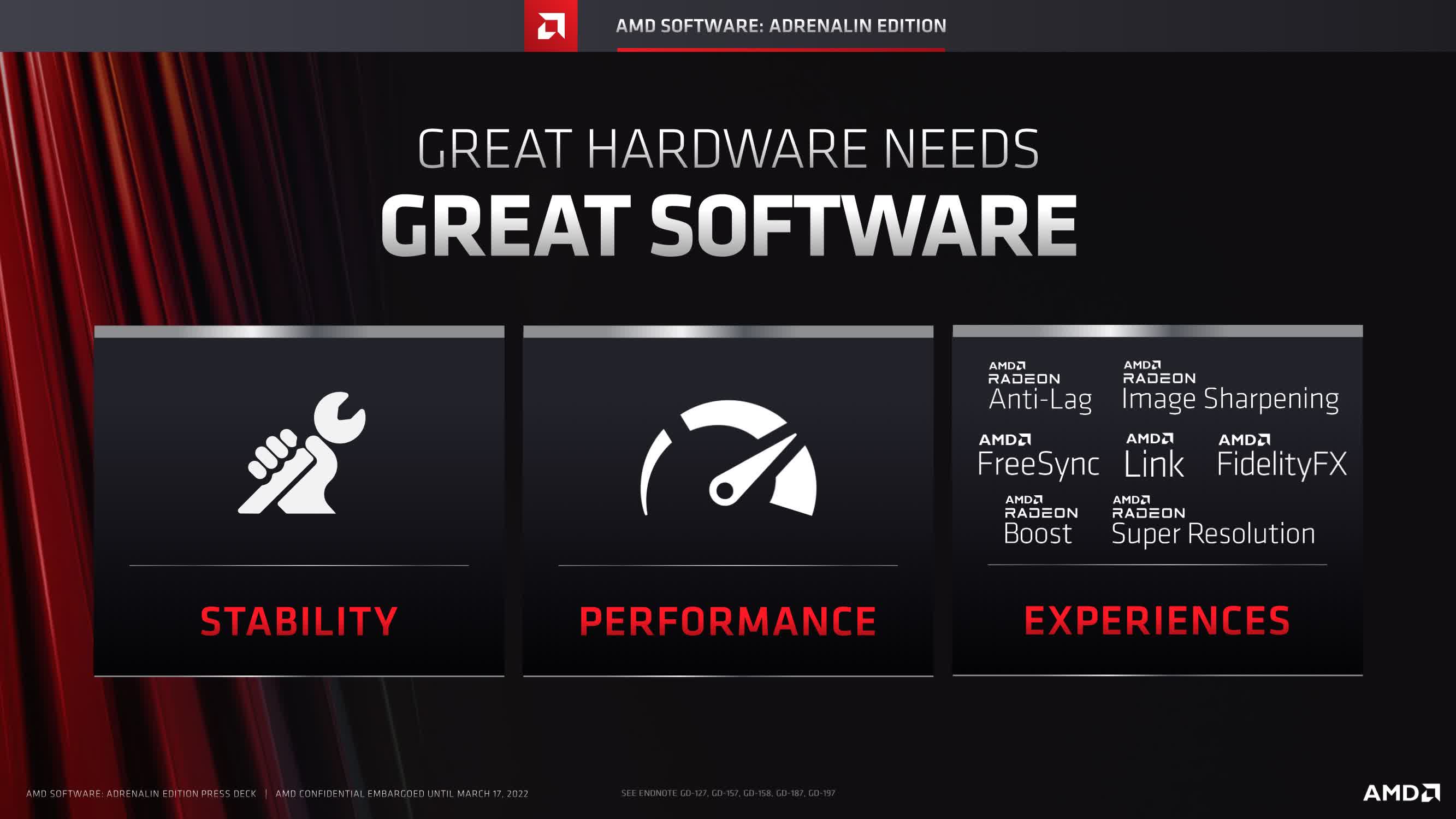
Many of these image quality areas should be improved with the switch from spatial to temporal. AMD claims FSR 2.0 should deliver "similar or better than native image quality" and that it includes "optimized anti-aliasing," suggesting FSR 2.0 will replace the game's built-in AA when activated, like DLSS does.
... saying that something produces "better than native" image quality is a bit of a buzzword these days.
However saying that something produces "better than native" image quality is a bit of a buzzword these days. We've seen Nvidia claim this countless times, and that isn't always the case.
Does AMD mean better than native when looking at static scenes? In motion? At lower resolutions? We'll have to explore that when we get more information and hands-on time with the technology, but at the very least they are expecting FSR 2.0 to deliver better image quality than FSR 1.0 at all resolutions and presets.
Another key aspect to FSR 2.0 is that it does not require dedicated machine learning (or AI) hardware to run. In fact, when we asked AMD, they said that AI was not used in creating the algorithm, so in other words FSR 2.0 is not based on AI like DLSS is (kind of). The reality is that DLSS in its current form is only using a generalized AI algorithm to enhance the upscaling pipeline -- that same algorithm is applied to all games. It is possible to create a generalized temporal upscaling algorithm without AI, case in point, Epic Games have done so in Unreal Engine, it's just a question of how good it is, and we don't really have an idea of that yet without testing it.
AMD will be sharing more on how FSR 2.0 works at a GDC presentation next week.
However, the benefit to not using AI is that AMD is able to create a solution that works across a wide range of products. AMD is saying FSR 2.0 will work on AMD GPUs and competitor GPUs, however they didn't go into specifics on what GPUs would be supported, or what instruction sets are required.
Intel's XeSS, for example, is AI accelerated and supports two pipelines, one using XMX acceleration specific to Intel Arc GPUs, and one using DP4a instructions. DP4a is widely supported across current generation hardware, but not so much on older cards like the Polaris series (RX 580, and so on).
If AMD's solution is able to use an even more widely supported instruction set than DP4a, this would be a huge bonus for owners of older GPUs, but we'll have to hear more at GDC to see the specific requirements for FSR 2.0 and how it works. Hopefully it will remain an open source solution, and we very much expect this to be the case.
AMD was willing to show image quality for FSR 2.0, but only in a single scene in the game Deathloop, and only as a static image. There are heaps of caveats here, but let's take a closer look.
AMD provided native resolution at 4K, FSR 1.0 at 4K using the Quality mode, and FSR 2.0 at 4K using the Quality mode. FSR 2.0 clearly delivers better image quality than FSR 1.0, even when using the Quality mode based on this single, possibly cherry picked and ideal sample.
The sign in the center of the screen is sharper using FSR 2.0, and the brickwork to the left has finer detail, closer in quality to what you see in the native image. FSR 2.0 also has tell-tale signs of temporal upscaling and the whole "better than native" image quality thing in fine details.
The benefit FSR 2.0 is bringing to this scene is even more apparent when looking at AMD's Performance mode comparison. FSR 1.0 looks kinda bad here, especially for any fine detail. Look at the way this rail and window were handled in the upper left, FSR 2.0 is very jagged and clearly lacking in detail as it can't reconstruct these areas well from a single 1080p frame. But FSR 2.0 looks pretty similar to native, aside from some obvious differences to shadows in these captures, not sure if that's related to FSR 2.0 or not, again all we have are these images.
Now let's talk about the caveats. The first is obvious in that a single game sample is being shown. FSR 1.0 quality varied considerably depending on the title. Some games did not work well with the technology, others were decent. Same with DLSS, where in some games it does largely produce a better than native image, while in others it can reduce and blur details. Deathloop could be one of the better examples for FSR 2.0, and AMD chose not to directly compare it to DLSS in this game, which is available.
The second is that we're looking at a static image. It's not even a video of a static scene, it's literally a screenshot (Update: AMD uploaded a teaser video this morning, see that right down below). Static scenes, with no movement, captured as screenshots, are extremely favorable to temporal upscaling solutions because they hide all the issues in motion. The word "temporal" in the technology indicates this is how the data is collected for upscaling, temporally, over time. And this is also how artifacts come about, if the scene changes very little from one frame to the next, this is a perfect set of data to use for temporal upscaling. But if the image changes, it gets a lot harder for temporal upscaling to deliver like-native image quality.
We've seen this numerous times before with DLSS and other techniques. In several games, DLSS was prone to heavy ghosting. This has been cleaned up to some degree with newer revisions, but may present itself with FSR 2.0. Similar with shimmering and moire effects for fine details, this can be quite noticeable when using lower quality upscaling modes in motion. Nothing we have shown today shows how FSR 2.0 will handle motion and this is arguably the most important factor to image quality.
As expected, AMD is also suggesting solid performance gains, although again we have only a single example which shows Deathloop going from 53 FPS at native 4K, to 101 FPS using the performance FSR 2.0 mode.
We're pretty excited to see how FSR 2.0 compares to DLSS and XeSS, but it all hinges on performance and image quality at the end of the day. I'm also curious to see how a non-AI based approach can handle this problem, especially if going down this path allows it to work on a far greater range of hardware. So many questions and so little answers... for now.
Moving on to the other AMD announcements, let's now talk about Radeon Super Resolution, which was first announced at CES 2022. RSR will become available today as part of the new AMD Software Adrenalin Edition package, so you can download it and try it out for yourself, provided you have an RX 5000 series GPU or newer.
Radeon Super Resolution is a driver-based implementation of FSR, in the same vein as Nvidia Image Upscaling. While FSR is an implementation in the game itself and is applied before the final effects and UI are rendered, RSR is applied to the entire game image and doesn't require developer integration. The trade-off here is RSR supports more games (basically any game), but at a lower image quality as it will upscale things like the UI which ideally shouldn't be upscaled.
AMD's RSR implementation does have some advantages that Nvidia Image Upscaling doesn't have. The big one is you can apply it on a per-game basis within the driver settings, bizarrely Nvidia doesn't allow you to do that, making it clunky to only apply to certain titles.
However, using RSR remains a multi-step process: first you need to enable RSR in the driver either globally or for the game you want to upscale, then separately you need to lower the game's output resolution in the game itself. In a perfect world, this would be a magic one-click solution like FSR, but this would be very difficult to get working across a wide range of titles, so AMD has attempted to offer the next best thing.
Those are the announcement highlights from AMD today. The latest Radeon drivers also include a few other neat features like supporting image sharpening for media playback, updates to AMD Link, and so on, but RSR support today and FSR 2.0 coming soon are the big ones.
https://www.techspot.com/news/93811-amd-set-upgrade-radeon-gpus-fidelityfx-super-resolution.html
